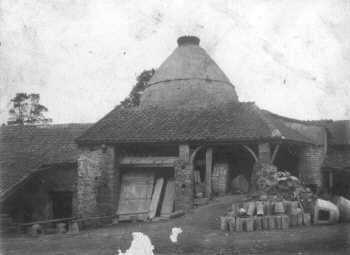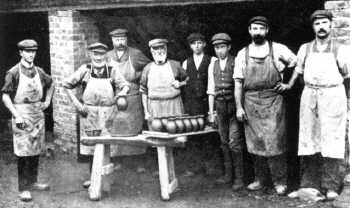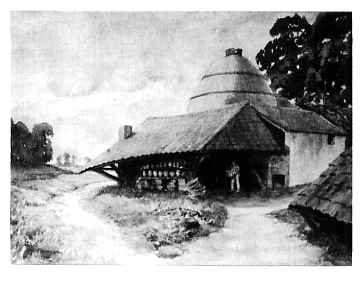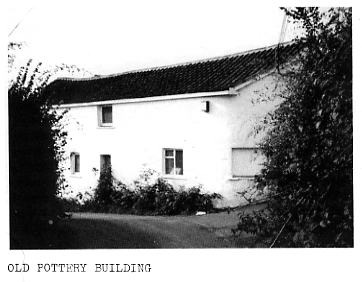Fremington
From Wikipedia, the free encyclopedia
Fremington is a village in North Devon three miles (5 km) west of Barnstaple. Formerly a borough that sent members to Parliament in the reign of Edward III. The parish itself includes the neighbouring villages of Bickington and Yelland, the latter only asserting its identity as separate entity during the 1980's. Fremington hundreds was one of the 32 historical districts of the county of Devon. Geographically, the centre of the village is approximately a mile (2 km) south of its Quay, the latter a historic wharf situated on the southern bank of the River Taw.
The church, St Peter, was thoroughly 'Victorianised' in 1867 during renovations directed by the architect Sir George Gilbert Scott. The stone pulpit still carries traces of colour, apparently from the soil in which it was buried during the Reformation. St Peter's medieval tower is positioned at the east end of the church, to the north of the chancel, an oddity shared in North Devon with Barnstaple and Pilton. The only other architecture of note is Fremington Manor, now a retirement home, situated 50 metres east of St Peters. It is also a nineteenth century remodeling. Fremington's amenities include two pubs, the Fox and Hounds and the New Inn; they are situated almost next door to each other.
Fremington is famous for Fishley Pottery. Excellent, stone-free clay pits (now mainly worked out) exist in the eastern half of the parish and were also used to form pottery for Barnstaple or 'Barumware'. The clay may have formed in varve lakes, near an ice deposit which lay over Fremington during the Last Glacial Maximum. Rare (for south-western England) glacial deposits are found here. Two patches of boulder clay lie over the centre of the parish's bedrock. The next nearest boulder clay can be found in the Gower Peninsular, South Wales, approximately 45 miles (72 km) due north of Fremington. The nearest deposit of boulder clay in England can be found in the central Cotswolds, 6 miles (10 km) due east of Bourton-on-the-Water and approximately 140 miles (225 km) north-east of Fremington. The existence of the boulder clay is puzzling as the southern-most limit of the Devensian glaciation is theorised to have been located over South Wales. There are few other signs of glaciation in North Devon to support an extension to a more southerly limit. It has been theorised that the surface covering was in some way attached to an ice-mass that drifted across the Bristol Channel and deposited the till over Fremington. This, however, does not fully explain the presence of the nearly co-located varve clay beds.
The Tarka Trail cycle track, laid on the rail line from Barnstaple to Torrington, passes over Fremington Pill via the old London and South Western Railway iron bridge (railway line closed 1982; dismantled 1987) at Fremington Quay on the old Barnstaple to Torrington railtrack bed. The original railway was first planned in an Act of Parliament in 1838, and laid in 1846 connecting the 'Penhill' with Barnstaple at a cost of £20 000. A number of boats are moored here (in the Pill). The 'Quay Cafe' is located here. Whilst rather charmingly built in the style of a railway station, it is not the original one which was located the other side of the Tarka Trail where an original platform still exists. Other features around the Pill include a couple of Lime kilns, now thoroughly fenced off to prevent accidents.
Fremington Quay was once important in the import and export of many goods. It had railway sidings, cranes, etc., for the export of china clay and 'import' of coal. Between the early to mid-twentieth centuries it was the busiest (tonnage) port between Bristol and Lands End. In later life an abattoir was located here.
There is an army camp in village which is used as a base to train the Army Air Corps. The camp was originally located here to be within easy marching distance (800 m) from the railway station at the Quay. It now complements the Marines and Air Force presence at Royal Marines Base Chivenor, situated a mile (2 km) northwards on the opposite bank of the River Taw and the Amphibious Trials and Training Unit of the Royal Marines at Arromanches Camp, Instow.
The 1848 'Lewis' survey shows the parish has 6810 acres (28 km²), of which 999 acres (4 km²) were waste or common land. The number of dwellings in the village was static between the first Ordnance Survey series in the 1880's until the second world war. Fremington has since multiplied in size several times over. The population is now approximately 5 200. The A39 trunk road, which forms the main route to north-west Devon and north-east Cornwall, was diverted 2 miles (3 km) south of the village in 1989, relieving the village of its annual summer traffic jams.
|




